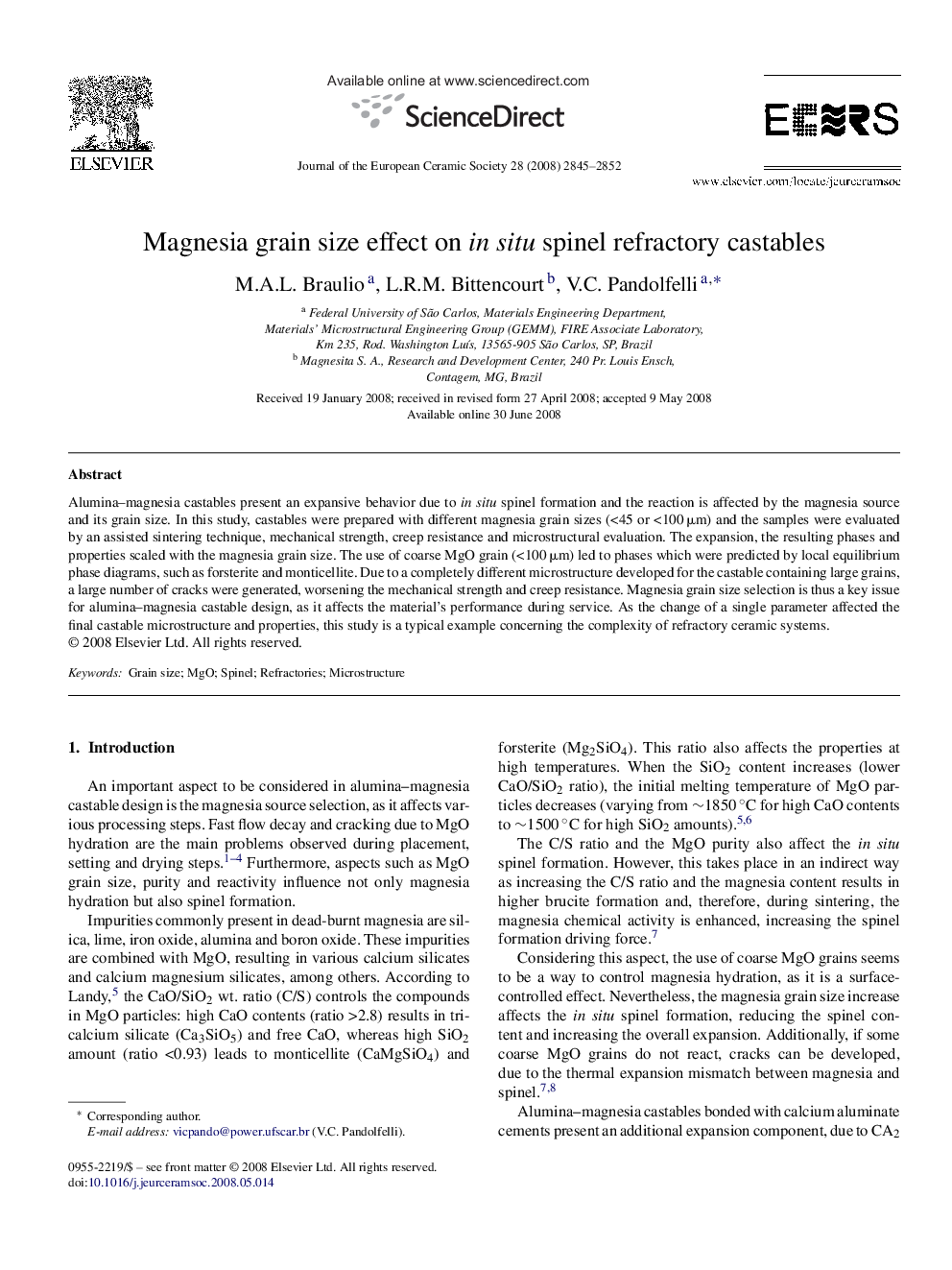| Article ID | Journal | Published Year | Pages | File Type |
|---|---|---|---|---|
| 1477629 | Journal of the European Ceramic Society | 2008 | 8 Pages |
Alumina–magnesia castables present an expansive behavior due to in situ spinel formation and the reaction is affected by the magnesia source and its grain size. In this study, castables were prepared with different magnesia grain sizes (<45 or <100 μm) and the samples were evaluated by an assisted sintering technique, mechanical strength, creep resistance and microstructural evaluation. The expansion, the resulting phases and properties scaled with the magnesia grain size. The use of coarse MgO grain (<100 μm) led to phases which were predicted by local equilibrium phase diagrams, such as forsterite and monticellite. Due to a completely different microstructure developed for the castable containing large grains, a large number of cracks were generated, worsening the mechanical strength and creep resistance. Magnesia grain size selection is thus a key issue for alumina–magnesia castable design, as it affects the material's performance during service. As the change of a single parameter affected the final castable microstructure and properties, this study is a typical example concerning the complexity of refractory ceramic systems.
